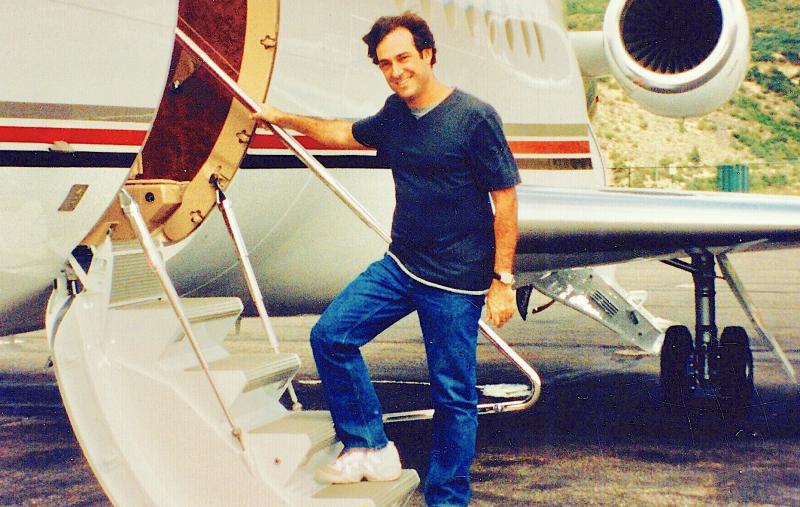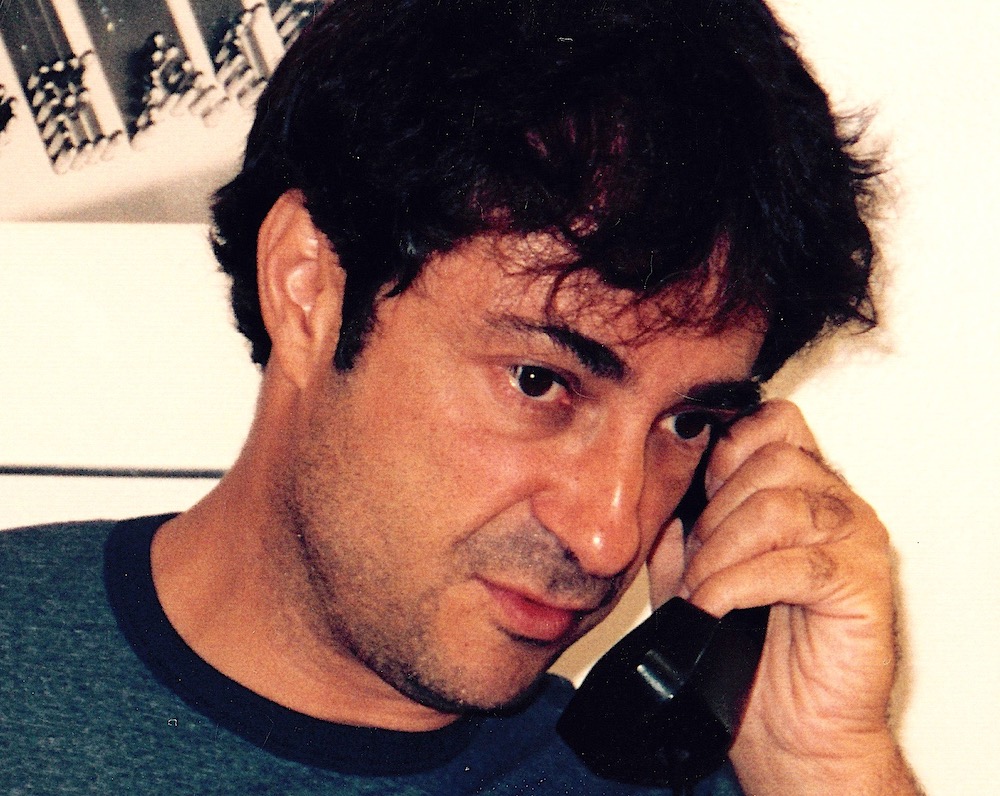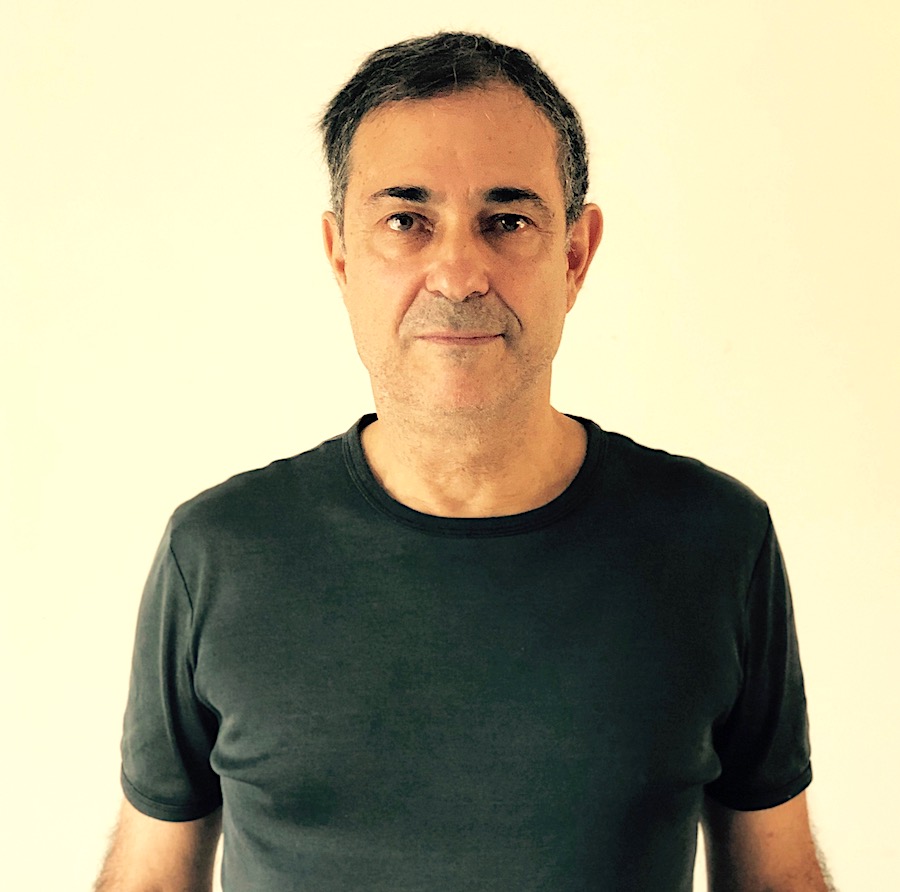The $50m Art Swindle, BBC Two review - ramblin' gamblin' man comes home to roost | reviews, news & interviews
The $50m Art Swindle, BBC Two review - ramblin' gamblin' man comes home to roost
The $50m Art Swindle, BBC Two review - ramblin' gamblin' man comes home to roost
Vanessa Engle's story of art fraudster Michel Cohen is better than fiction

“It’s nice to make money – lots of money,” said Michel Cohen, former high-flying New York art dealer turned debtor, jailbird and fugitive. He made oodles of the stuff and then lost it all, leaving a string of wealthy art collectors and galleries to lick their wounds over the colossal debts he never repaid.
Vanessa Engle’s film for the BBC's Arena strand was a portrait of the man and the big-money art scene of the 1990s, as well as a barely-believable detective story as the documentarist tracked down her quarry after he’d disappeared in Rio de Janeiro 16 years ago. Vengeful creditors and assorted law enforcement agencies have been keen to get their hands on Cohen, but Engle and her producer Billie Shepherd succeeded where they’d all failed.
Their dogged persistence eventually led to a meeting with Cohen in France, where he now lives with his family. As a French citizen he can’t be extradited to the USA, though breaking cover and being filmed like this is surely perilous. As a man who thrived on risk and chutzpah, maybe he just needed to feel that adrenalin rush again.
 Engle told the story with cool and faintly ironic elegance, counterpointing interviews and actualité segments with smartly-paced music and dreamy archive material. It gradually gelled into a resonant myth of self-reinvention, with a built-in penalty clause. Cohen was born in a low-rent Parisian suburb in 1953, showed early potential by becoming France’s top Encyclopedia Britannica salesman at age 19, then hightailed it for the USA in 1980 with his friend Richard Roy. They ended up in San Francisco selling their own home-made paté (they were French after all, even though Cohen was calling himself Michael at this stage).
Engle told the story with cool and faintly ironic elegance, counterpointing interviews and actualité segments with smartly-paced music and dreamy archive material. It gradually gelled into a resonant myth of self-reinvention, with a built-in penalty clause. Cohen was born in a low-rent Parisian suburb in 1953, showed early potential by becoming France’s top Encyclopedia Britannica salesman at age 19, then hightailed it for the USA in 1980 with his friend Richard Roy. They ended up in San Francisco selling their own home-made paté (they were French after all, even though Cohen was calling himself Michael at this stage).
Cohen had the bright idea of importing French lithographs and selling them, then grasped that selling original paintings was where the real money was to be made. Though almost entirely clueless about art, Cohen had a phenomenal memory which he used to soak up the contents of auction catalogues, and he proved as skilful at selling paintings as he’d been with encyclopedias. “Nothing really mattered except the value of the commodity,” as one acquaintance put it. This was something Americans understood instinctively.
Long story short, he opened a gallery 1018 Madison Avenue in New York. His burgeoning reputation and Gallic charm (he was “Michel” by now, lending him a marketable patina of Old World culture) meant that his credit was good, and dealers were happy to lend him De Koonings or Monets that he could present to potential buyers.
Up to this point, as several interviewees attested, Cohen had been a straight dealer who paid his debts, but Wall Street was his undoing. He got hooked on real-time options trading and enjoyed staggering success, on one occasion turning $30,000 into $14m (not sure I believe those numbers, actually). Cue a luxury mansion in Malibu and a fondness for private jets, before luck ceased being a lady and dumped Cohen into a black hole of debt. Like Max Bialystock in The Producers, he embarked on a frenzied bout of chicanery, borrowing priceless paintings and selling the same ones to multiple buyers at exorbitant sums. When he defaulted on a $10m debt to Sotheby’s, they called the police.
 Cohen did a runner to Rio, living under his own name in some style until he was arrested. His escape from Brazil was reminiscent of Papillon, involving leaping from a police car and spending three days paddling across the Amazon to reach French Guyana and the bosom of la Patrie. Incredible.
Cohen did a runner to Rio, living under his own name in some style until he was arrested. His escape from Brazil was reminiscent of Papillon, involving leaping from a police car and spending three days paddling across the Amazon to reach French Guyana and the bosom of la Patrie. Incredible.
Engle got a bit over-literal by dropping in twiddly South American guitars for the Rio section, plus Aznavour’s "Yesterday When I Was Young" and Piaf’s "Je Ne Regrette Rien", but this was a splendid yarn with a bracing underpinning of moral hazard. There was a delicious moment when Engle suggested to Cohen that what he called loans were in fact theft. “They were loans at the time,” Cohen countered. Tell it to the judge.
It was certainly true that Cohen (as he is today, pictured above) seemed to lack remorse. “It’s not in my mentality to have regrets,” he declared. Maybe they could get Jean Dujardin for the big-budget movie?
Add comment
The future of Arts Journalism
You can stop theartsdesk.com closing!
We urgently need financing to survive. Our fundraising drive has thus far raised £49,000 but we need to reach £100,000 or we will be forced to close. Please contribute here: https://gofund.me/c3f6033d
And if you can forward this information to anyone who might assist, we’d be grateful.

Subscribe to theartsdesk.com
Thank you for continuing to read our work on theartsdesk.com. For unlimited access to every article in its entirety, including our archive of more than 15,000 pieces, we're asking for £5 per month or £40 per year. We feel it's a very good deal, and hope you do too.
To take a subscription now simply click here.
And if you're looking for that extra gift for a friend or family member, why not treat them to a theartsdesk.com gift subscription?
more TV
 The Monster of Florence, Netflix review - dramatisation of notorious Italian serial killer mystery
Director Stefano Sollima's four-parter makes gruelling viewing
The Monster of Florence, Netflix review - dramatisation of notorious Italian serial killer mystery
Director Stefano Sollima's four-parter makes gruelling viewing
 The Diplomat, Season 3, Netflix review - Ambassador Kate Wyler becomes America's Second Lady
Soapy transatlantic political drama keeps the Special Relationship alive
The Diplomat, Season 3, Netflix review - Ambassador Kate Wyler becomes America's Second Lady
Soapy transatlantic political drama keeps the Special Relationship alive
 The Perfect Neighbor, Netflix review - Florida found-footage documentary is a harrowing watch
Sundance winner chronicles a death that should have been prevented
The Perfect Neighbor, Netflix review - Florida found-footage documentary is a harrowing watch
Sundance winner chronicles a death that should have been prevented
 Murder Before Evensong, Acorn TV review - death comes to the picturesque village of Champton
The Rev Richard Coles's sleuthing cleric hits the screen
Murder Before Evensong, Acorn TV review - death comes to the picturesque village of Champton
The Rev Richard Coles's sleuthing cleric hits the screen
 Black Rabbit, Netflix review - grime and punishment in New York City
Jude Law and Jason Bateman tread the thin line between love and hate
Black Rabbit, Netflix review - grime and punishment in New York City
Jude Law and Jason Bateman tread the thin line between love and hate
 The Hack, ITV review - plodding anatomy of twin UK scandals
Jack Thorne's skill can't disguise the bagginess of his double-headed material
The Hack, ITV review - plodding anatomy of twin UK scandals
Jack Thorne's skill can't disguise the bagginess of his double-headed material
 Slow Horses, Series 5, Apple TV+ review - terror, trauma and impeccable comic timing
Jackson Lamb's band of MI5 misfits continues to fascinate and amuse
Slow Horses, Series 5, Apple TV+ review - terror, trauma and impeccable comic timing
Jackson Lamb's band of MI5 misfits continues to fascinate and amuse
 Coldwater, ITV1 review - horror and black comedy in the Highlands
Superb cast lights up David Ireland's cunning thriller
Coldwater, ITV1 review - horror and black comedy in the Highlands
Superb cast lights up David Ireland's cunning thriller
 Blu-ray: The Sweeney - Series One
Influential and entertaining 1970s police drama, handsomely restored
Blu-ray: The Sweeney - Series One
Influential and entertaining 1970s police drama, handsomely restored
 I Fought the Law, ITVX review - how an 800-year-old law was challenged and changed
Sheridan Smith's raw performance dominates ITV's new docudrama about injustice
I Fought the Law, ITVX review - how an 800-year-old law was challenged and changed
Sheridan Smith's raw performance dominates ITV's new docudrama about injustice
 The Paper, Sky Max review - a spinoff of the US Office worth waiting 20 years for
Perfectly judged recycling of the original's key elements, with a star turn at its heart
The Paper, Sky Max review - a spinoff of the US Office worth waiting 20 years for
Perfectly judged recycling of the original's key elements, with a star turn at its heart
 The Guest, BBC One review - be careful what you wish for
A terrific Eve Myles stars in addictive Welsh mystery
The Guest, BBC One review - be careful what you wish for
A terrific Eve Myles stars in addictive Welsh mystery

Comments
I thought this film was